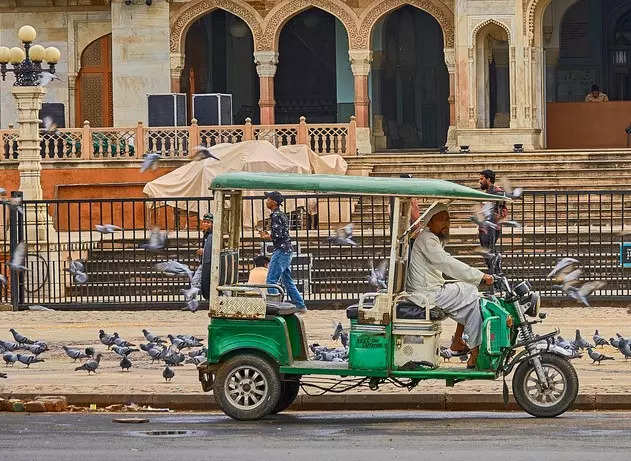
Raghu Mohan skilfully navigates the bustling streets of Varanasi, his electric rickshaw (E3W) gliding silently amid hustle and bustle and pollution of conventional vehicles. A 50-year-old former cycle rickshaw puller, Raghu has taken to an electric vehicle (EV), a sustainable mode of transportation, contributing to his and the country’s economic growth.
As a burgeoning global economic powerhouse, India stands at the threshold of an extraordinary paradigm shift towards sustainable transportation. In a resolute bid to combat pollution and reduce dependence on fossil fuels, electric vehicles have emerged as an undeniably compelling solution.
In the realm of the urban and semi-urban transport, e-rickshaws have emerged as a game-changer, revolutionising the first and last-mile connectivity and significantly reducing air pollution and noise
levels. Market research reveals the growing popularity of battery-operated e-rickshaws in India, with an impressive 83% share of the country’s EV market. Valued at USD 1.1 billion in 2021, the Indian electric rickshaw market is projected to reach USD 2.8 billion by 2027, exhibiting a compound annual growth rate (CAGR) of over 11%.
Amid the economic slowdown and vulnerabilities heightened by the pandemic, India’s need for inclusive and sustainable solutions has become more apparent. While challenges such as high upfront costs, investment risks, and regulatory uncertainties hinder the widespread adoption of EVs, e-rickshaws have emerged as a significant segment, bridging transportation gaps and providing pollution-free alternatives. With approximately 1.5 million e-rickshaws currently in operation and expected sales growth, they offer a potential solution to enhance both mobility and livelihoods.
E-rickshaws have the power to uplift marginalised communities, providing a reliable source of income and contributing to household finances. Moreover, these eco-friendly vehicles offer cleaner and quieter transportation options, addressing pollution concerns and ensuring safer commutes.
By filling gaps in public transport infrastructure, e-rickshaws improve accessibility, particularly in densely populated urban areas.
Recognising the gendered nature of travel patterns, infrastructure requirements are crucial in designing equitable policies and efficient mobility solutions. Women, who heavily rely on public transport, often prioritise safety concerns in their mobility choices. E-rickshaws are pivotal in providing women with secure and defined connectivity options, empowering them and enabling their participation in economic activities.
By enhancing first and last-mile connectivity, e-rickshaws alleviate the insecurities and discomfort experienced by women during travel. Investments in e-mobility should embrace social inclusion and ensure just transitions, especially as part of the post-COVID recovery packages. The development of the EV ecosystem creates employment opportunities that require inclusive skilling programs catering to women and socio-economically disadvantaged groups. Examining the benefits and challenges faced by e-rickshaw drivers and their households is crucial to promote inclusive and sustainable economic growth. Ground-level evidence can inform policies and initiatives that benefit the drivers and contribute to the agenda of a greener economy.
E-rickshaws possess the potential to drive inclusive and sustainable economic growth in India. By addressing transportation gaps, reducing pollution, and improving the lives and livelihoods of drivers, they offer a promising solution for urban mobility. However, overcoming challenges related to regulations, infrastructure, and safety concerns is essential for their effective adoption.
Additionally, gender-inclusive policies and measures must be integrated into the design and implementation of future mobility solutions. By leveraging the opportunities presented by e-mobility, India can pave the way for a greener and more prosperous future.
(Disclaimer: Nagesh Basavanhalli is the Vice-Chairman of Greaves Cotton Limited. Views are personal.)
















